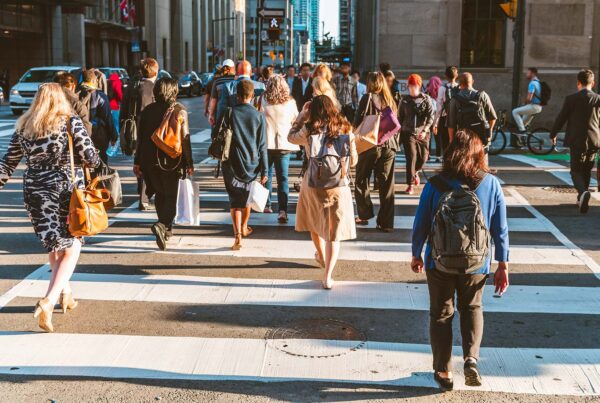One of the positive things coming out of the COVID-19 lockdown has been the explosive growth in online workshops by national and world champions. We’ve attended a number of these over the past two months, and it has been a refreshing chance to increase our own knowledge and understanding of key principles in dance.
Among these workshops has been an awesome series by Marat Gimaev & Alina Basyuk that I was fortunate to be part of. This couple are World, Blackpool, UK and International professional Ballroom finalists. Organized by Seattle-based pro Atanas Malamov, the sessions focused on how to maximize the musical expression of the different Ballroom dances.
I enjoyed this series so much I wanted to share some of the key points that were covered.
Each dance is different. When we understand the foundational characteristic on which each of the dances is based, we can begin to apply the character of the dance through our body actions to create a more beautiful visual presentation of the dance.
To begin with, music must come first in dancing. I have said this in many of my posts. Without music, you can have movement, even beautiful and rhythmical movement. But you cannot have dancing without music. Not really. There are show dances where the dance begins or ends with silence so that the movement creates a statement, but to try and present an entire Ballroom or Latin dance without music is ludicrous as a concept.
Music is the base of what we do. Dance is the expression through our bodies of that music. The beauty and, to be fair, the difficulty of ballroom dance is in the two partners expressing the same thing so that they appear to be one entity in perfect harmony with the music even as they are two distinct personalities on the floor.
All creatures are able to reflect, through their bodies, a feeling in response to music. I’ve seen videos of elephants swaying to a violin, cockatiels bobbing their heads to AC/DC, and dogs jamming with the beat of a street musician. It’s natural. Humans are much more complex so it makes sense that our response would be more complex as well.
So if music is the foundation of each dance, what do the different dances express through their character?
According to Marat, the syllabus steps are actually the closest we get to the original intent of the character of each dance. He offered up the following definitions of how he sees each dance. Others may have different views and that’s fine. Keep in mind that these are generalities. Different songs can move away from these descriptions and can still be authentic, but I like how he described the different characteristics with such clarity.
Waltz
Slow Waltz, or Modern Waltz, is characterized by a feeling of nostalgia. It is usually romantic, but more along the lines of looking back at the past. It can express the memories we had together, or the story of love lost (and maybe found again), or looking back to when we were younger full of youthful passion, that kind of thing. It is high and elegant, involving breathing technique to express the body rise combined with foot rise to create deep rise and fall swing action.
Viennese Waltz
In contrast to the Slow Waltz, Viennese Waltz is flows with a spirit of celebration but in a way that celebrates coming out of a difficult time. In the 1800s the Napoleonic wars ended and people celebrated the return to peace. They got together in massive halls with up to 5,000 people to dance. It was an expression of elegance and affluence. Yes, a party, but one that had an undertone of things lost. Most VW songs start with a kind of slow, somber melody then spin up to the exuberant expression that we are alive and free.
Tango
Tango is romantic but at the same time it reflects a battle of wills. It’s not angry or necessarily aggressive, but a dance that speaks of two minds that, even if they are lovers, are individual and may not always agree. The Tango was originally born as a dance of challenge, much like break dancing, where boys would challenge one another to outdo the other’s foot patterns. It was seen by Parisian dance teachers in 1906 and brought back to Paris where they developed it into a partner dance between a man and a woman. It still retains that character of challenge, even today. Both partners are strong and have their own unique needs and independence, yet are agreeing with one another in the movement expressed on the floor.
Slow Foxtrot
The Slow Foxtrot, and to some extent, the American Smooth Foxtrot, is a story of romance but completely focused on the present moment. Unlike the Waltz, which is more about the past, the Slow Foxtrot is a celebration of lovers moving together right now, with no thought of what was or what might be down the road. The feeling is kind of like “let’s move together and see where this takes us.” During WWII the dance halls were filled with couples who didn’t know if their partner would be alive tomorrow night. They only had that night, that moment, to enjoy each other’s company. This is the character of Foxtrot! For that reason, this dance is one that continually flows with constant body movement.
Where the Waltz has huge highs and lows, like waves on the ocean, the Foxtrot is like the water in a fast-flowing river that doesn’t have much in the way of rise and fall but moves through the eddies and currents without stopping anywhere. Marat shared that because the movement is deeply connected to the floor it might be more like honey flowing like a river, with no sudden splashes like those you would get from water.
During war time couples only had that night, that moment, to enjoy each other’s company. This is the character of Foxtrot.
Quickstep
This is a real “party” dance. The music almost always reflects a feeling of pure fun and pleasure. The Quickstep grew out of dances like the Charleston which were popular during the Roaring Twenties. The world had just come out of a terrible World War, and was now celebrating life and love and opportunity. Just a few short years later the world would be plunged into the Great Depression but again came out of it with a sense of exuberance into which the Quickstep exploded to prominence. The Quickstep is exuberant and joyful, with a lot of energy. It is high in the use of body rise, lifting the bodies up over the floor.
When you understand these foundational characteristics of these dances, you can begin to ensure that each dance is treated differently, with the appropriate musical expression and style of movement.
Unfortunately too many dancers today are thinking entirely of foot actions or technical precision or other aspects of partner dance. While those things are all important, they should never overshadow the most important quality of the dance. Because when they do, the dances take on a look of sameness. While we can’t truly express the dance without music, people should be able to recognize what we are dancing even if the music is turned off. That’s the sign that we are expressing the underlying characteristic of each of these dances.














